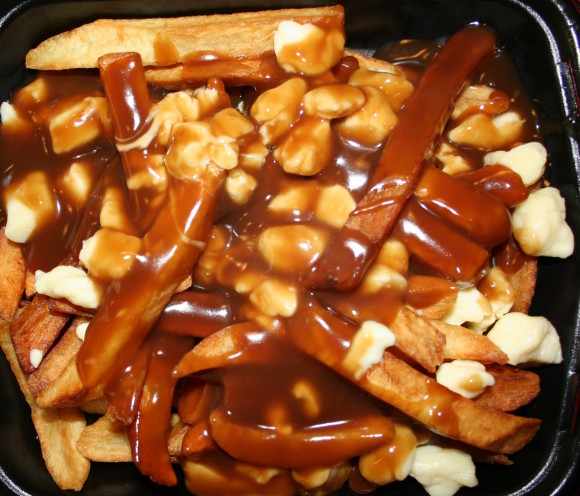Last updated on May 24, 2015
Let me take a moment to talk about something extremely serious for once on this blog.
Yesterday morning, a good friend shared the following tweet with me:
You will need ALL your utensils to finish off French Onion Soup Poutine. http://t.co/kZBtT39FFU #FWx pic.twitter.com/6d1QVtsSqX
— Food & Wine (@foodandwine) April 21, 2015
Now, most of you probably know that I am French Canadian. And most of you probably know that poutine is a French Canadian dish.
As someone who discovered poutine growing up–I remember tasting it for the first time when camping with my maternal grandparents when I was five and my grandfather offered me a bit of his–and has consumed all kinds of it (as recently as last weekend while in Montreal for a wedding), I told my friend who sent me the above tweet that this was typical of Americans trying to make poutine and inevitably screwing up the dish–often voluntarily so.
That is something I have been asking people when I tell them that I am French Canadian and they almost inevitably tell me that such-and-such place in town serves poutine: “Do they serve real poutine, or a fancy American version thereof?”
Poutine is a simple dish, you see. It should really only consist of three ingredients–French fries, cheese, and gravy.
Even when American restaurants do just that, they manage to screw it up. The cheese has to be fresh cheddar cheese curds (luckily, they make and sell those in Western Wisconsin, very close to where I live in the Twin Cities). The gravy has to have that unique flavor that is pretty much only found in Canada (a fish and chips joint close to my house has an almost perfect poutine… except for the awful gravy; here is what one should ideally use for their gravy).
Worse is when American restaurants completely screw up (what they irreverently call) poutine by heaping tons of unnecessary ingredients onto the dish. Foie gras on poutine? Sacrilege.* Ground meat in the gravy? Blasphemy! A French onion soup poutine? BURN THE WITCH!
This is what real poutine should look like:
Pretty simple, eh? And no trace of foie gras or ground meat or Gruyère or any of those fancypants ingredients.
All joking aside, what I wanted to highlight is this obsession–a seemingly distinctly American obsession–to want to fancify and academicize what isn’t fancy to begin with. Much like how jazz improvisation is now taught as a major at accredited four-year colleges, food is one of those things that hipster American chefs seem to be unable to leave alone–when I lived in North Carolina, the hipster chef obsession seemed to be with making either mac and cheese or Carolina barbecue as complicated as possible.
But some things should not be tinkered with. Could it be that I am becoming a traditionalist? Maybe. I don’t know. But I certainly have a better understanding now of how, beyond the obvious rent-seeking reasons, in some regions of France and Italy, certain people want there to be a strict definition of certain food offerings. I would be only half joking if I said that maybe it’s time for an official UNESCO definition of what poutine is–and what it isn’t.
* To be fair, this is something I’ve had in Montreal at Au Pied de Cochon, but the point still stands: Even that wasn’t really poutine.
